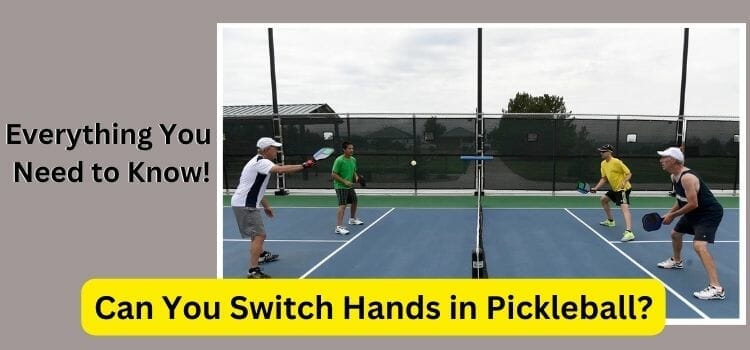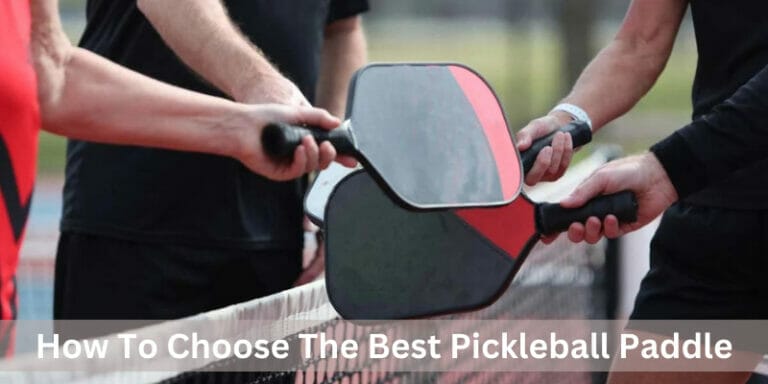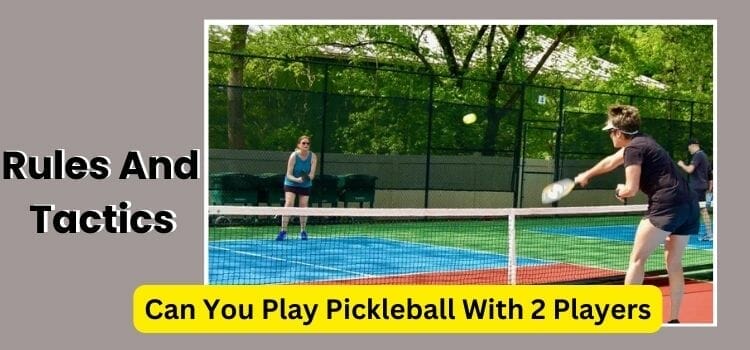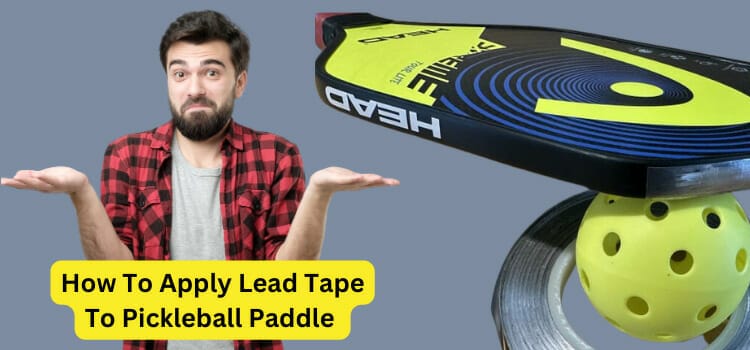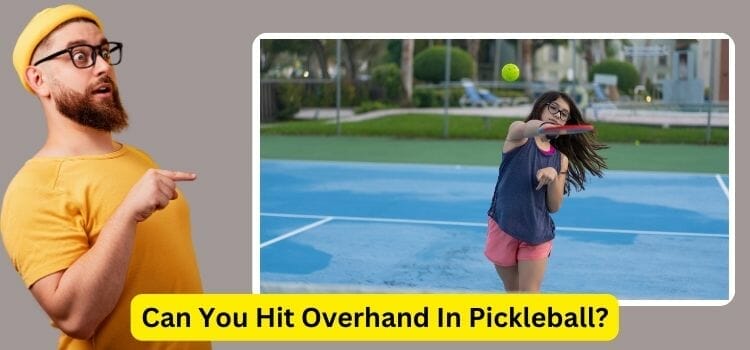How Much Does It Cost To Resurface a Pickleball Court | Best Guide
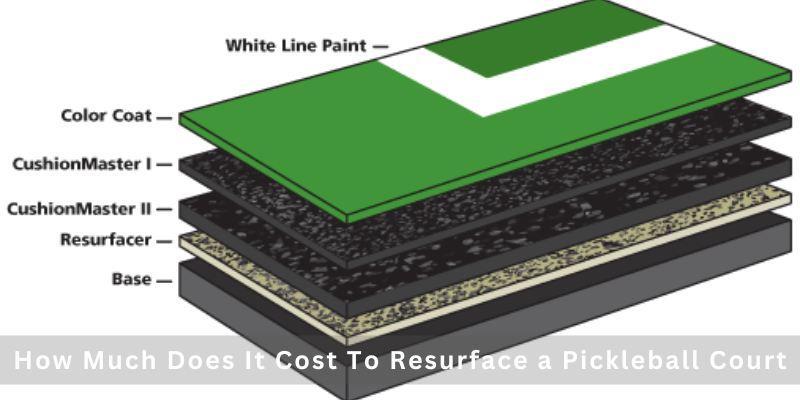
Keep your pickleball court in top shape without breaking the bank: learn about maintenance and resurfacing costs.
The cost to resurface a pickleball court typically ranges from $2,000 to $6,000, depending on factors such as court size, surface material, and labor costs. DIY options can be cheaper but may not result in a professional-quality finish. Hiring professionals is recommended for the best results.
One day while playing, I noticed some issues with my pickleball court surface, such as cracks and uneven areas.
After researching the cost to resurface the court, I decided to invest in the repair. The improved surface not only looked better but also made playing more enjoyable and safer.
In this article, i am going to share everything about how much it cost to resurface a pickleball court.
Without further ado, let’s get into it!
How much does it cost to resurface a pickleball court – A Complete Guide
Resurfacing a pickleball court is a necessary expense that comes with the regular maintenance of the court.
Over time, pickleball courts can become damaged due to wear and tear, weather, and other factors.
When the court’s surface becomes damaged, it’s essential to resurface it to keep it safe and enjoyable for pickleball players.
The cost of resurfacing a pickleball court can vary depending on several factors, including the pickleball court size, the extent of the damage, the type of surface material used, and the location of the court.
Generally, the cost of resurfacing a pickleball court can range from $2,000 to $6,000.
One of the most significant factors that affect the cost of resurfacing a pickleball court is the size of the court. Larger courts will require more surface material, which will increase the cost of the project.
The extent of the damage is another factor to consider, as minor damage may be repaired with minor touch-ups, while more significant damage may require full resurfacing.
The type of surface material used also plays a crucial role in determining the cost of resurfacing a pickleball court.
Some of the most common materials used for pickleball courts include acrylic, concrete, and asphalt.
Acrylic is the most expensive option, but it offers the best durability and performance. Concrete and asphalt are more affordable, but they may not last as long as acrylic.
The location of the court can also affect the cost of resurfacing. If the court is located in an area with a higher cost of living, the cost of labor and materials may be higher, which can increase the overall cost of the project.
Resurfacing a pickleball court is a necessary expense that should not be neglected. The cost of resurfacing will depend on several factors, including the size of the court, the extent of the damage, the type of surface material used, and the location of the court.
However, the investment is worth it to ensure that the court is safe, enjoyable, lasts for many years, and provides a great playing experience.
Importance of resurfacing pickleball courts
Resurfacing pickleball courts is important for several reasons.
First, it helps to maintain the integrity and safety of the playing surface. Over time, pickleball courts can develop cracks, bumps, and other imperfections that can lead to injuries or impact the game.
Resurfacing the court can ensure that the playing surface is smooth and level, providing a safe and fair playing field for all.
Second, resurfacing can enhance the overall playing experience. A well-maintained court can improve ball bounce, reduce noise, and provide better traction for players.
This can result in a more enjoyable and competitive game for all involved.
Thirdly, resurfacing can also improve the appearance and value of the court. A clean, smooth, and attractive court can be more appealing to players and spectators alike.
It can also help to attract new players to the sport and increase the usage of the court.
Lastly, regular resurfacing can extend the lifespan of the court, reducing the need for costly repairs or replacements in the future.
Overall, resurfacing pickleball courts is an important aspect of maintaining the quality and safety of the playing surface, enhancing the playing experience, and improving the overall value and appeal of the court.
Factors Affecting the Cost of Resurfacing a Pickleball Court
When considering the cost of resurfacing a pickleball court, there are several factors that can impact the total expense.
These include the size and condition of the court, the type of surface material, the type of coating used, labor costs, and other factors that may need to be considered.
1. Court Size and Condition
The size of the pickleball court can play a significant role in determining the resurfacing cost. Generally, the standard size of a pickleball court is 20 feet by 44 feet.
If the court is larger or has an irregular shape, it may require more materials and labor, thus increasing the overall cost.
Additionally, the condition of the court also matters. If the court has significant damages, cracks, or uneven surfaces, it will require more extensive repairs, resulting in higher costs.
2. Court Surface Material
The surface material of the court is another significant factor in determining the resurfacing cost.
There are different types of materials used for pickleball court surfaces, such as asphalt, concrete, and acrylic.
The material type will impact the overall cost of the project. Asphalt and concrete are relatively inexpensive than acrylic surfaces, but they may not provide the same level of durability and performance.
3. Type of Coating
The type of coating used for resurfacing can also impact the cost. There are different types of coatings available, such as cushioned, textured, or standard coatings.
Cushioned coatings provide more shock absorption and reduce the risk of injuries, but they can be more expensive than standard coatings.
4. Labor Costs
The labor cost is a significant part of the resurfacing cost. The number of workers required and the time required to complete the job can impact the overall cost.
If the court requires more extensive repairs or resurfacing, it may take more time and require more workers, thus increasing the labor cost.
5. Other Factors to Consider
Other factors that may affect the resurfacing cost include the location of the court, transportation costs, and additional repairs required.
The resurfacing cost may also vary depending on the contractor’s experience, reputation, and quality of work.
It’s essential to get multiple quotes from different contractors to compare the costs and ensure that you’re getting the best value for your money.
It’s also crucial to consider the long-term benefits of resurfacing a pickleball court, such as improved safety, durability, and playing conditions.
Average Cost of Resurfacing a Pickleball Court
The cost of resurfacing a pickleball court can vary depending on a variety of factors such as the court size, condition, surface material, type of coating, and labor costs.
On average, the cost can range from $2,000 to $6,000 per court.
Cost breakdown of different court sizes and materials
- For a standard-sized pickleball court of 30′ x 60′, the cost of resurfacing with an acrylic coating typically ranges from $3,500 to $8,000.
- If you have a larger court, such as 34′ x 64′, the cost may range from $4,000 to $8,500.
- The cost may also vary depending on the type of surface material. For instance, if you have a concrete court, the cost of resurfacing with an acrylic coating may be lower compared to resurfacing an asphalt or concrete court.
Comparison of the costs with other sports court resurfacing
When comparing the cost of resurfacing a pickleball court with other sports court resurfacing, it’s worth noting that pickleball court resurfacing is generally less expensive than tennis and basketball court resurfacing.
For instance, tennis court resurfacing can range from $3,000 to $8,000, and the cost to resurface a basketball court can range from $3,500 to $7,000.
This is because pickleball courts are smaller in size and require less coating material.
On the other hand, basketball and volleyball court resurfacing may cost more due to the thicker coatings required for those sports.
DIY vs. Professional Resurfacing of a Pickleball
When considering resurfacing a pickleball court, one option is to do DIY resurfacing (do it yourself). It can save money but requires significant time, effort, and expertise, but this may not be the best choice for everyone.
Professional resurfacing provides expert craftsmanship, high quality, and a long-lasting finish but comes at a higher cost.
Consider your budget, skill level, and time constraints when deciding between DIY and professional resurfacing options.
Advantages of DIY resurfacing
- Lower cost: Doing it yourself can save you money on labor costs.
- Sense of accomplishment: Completing a DIY construction project can give you a sense of satisfaction and pride.
- Flexibility: You can work on your own schedule and at your own pace.
Disadvantages of DIY resurfacing
- Lack of experience: If you don’t have experience, you may not know how to properly prepare the surface or apply the coating, which can result in a subpar job.
- Time-consuming: DIY resurfacing can be time-consuming, especially if you don’t have the proper tools and equipment.
- Risk of mistakes: Without proper knowledge and skills, you may make mistakes that could damage the court surface.
Pros of professional resurfacing
- High-quality work: Professionals have the experience and equipment needed to produce high-quality results.
- Time-saving: Professionals can complete the job more quickly and efficiently than a DIY project.
- Warranty: Professional resurfacing usually comes with a warranty, which can give you peace of mind.
Cons of professional resurfacing
- Higher cost: Hiring a professional can be more expensive than doing it yourself.
- Limited flexibility: You will need to work around the contractor’s schedule.
- Potential for miscommunication: If you don’t communicate your needs clearly, the court contractor may not meet your expectations.
Cost comparison between DIY and professional resurfacing
The cost comparison between DIY and professional resurfacing varies depending on several factors, such as pickleball court size, condition, materials, and labor costs.
On average, a DIY resurfacing project can cost between $500 to $1,000 for materials alone. In contrast, a professional resurfacing project can cost between $2,000 to $5,000 or more, including labor and materials.
However, DIY resurfacing may seem cheaper at first, but the cost of equipment and materials, as well as the risk of making mistakes, can add up while Professional resurfacing ensures high-quality work and may save money in the long run.
Professional resurfacing ensures a high-quality and long-lasting result, while DIY projects may require more maintenance and repairs over time. It is recommended to weigh the costs and benefits before making a decision.
Maintenance Costs of a Pickleball Court
Maintaining a new pickleball court is essential to prolong its lifespan, and the annual maintenance costs typically include pressure washing, resurfacing, crack repair, line painting, and net replacement.
A. Importance of Maintenance for the Longevity of the Court
Regular maintenance of a new court is crucial to ensure its longevity. Without proper maintenance, the court surface may crack or deteriorate, resulting in a costly repair or replacement.
By performing routine maintenance, you can extend the life of your pickleball court and ensure that it remains safe and enjoyable for players.
B. Annual Maintenance Costs Breakdown
The annual maintenance costs for a pickleball court can vary depending on factors such as court size, location, and the type of surface. Here is a breakdown of some of the typical annual maintenance costs:
- Pressure washing: $100-$300
- Resurfacing: $1,000-$5,000
- Crack repair: $200-$500
- Line painting: $100-$300
- Net replacement: $50-$150
C. Tips to Keep the Court in Good Condition
To keep your pickleball court in good condition, here are some tips to follow:
- Sweep the court regularly to remove debris and prevent buildup.
- Avoid using harsh chemicals or pressure washers, as they can damage the court surface.
- Repair any cracks or damage promptly to prevent further damage.
- Keep the court surface dry to prevent mold and mildew growth.
- Cover the court when not in use to protect it from the elements.
By following these maintenance tips and performing regular upkeep, you can ensure that your pickleball court remains safe, functional, and enjoyable for years to come.
Financing Options for Resurfacing a Pickleball Court
Knowing the different financing options available for resurfacing a pickleball court, as well as their pros and cons, can help you choose the best option for your budget and ensure that your court is in top condition for years to come.
A. Different financing options available for resurfacing a pickleball court
There are several financing options available for resurfacing a pickleball court, including:
1. Personal loans
You can take out a personal loan from a bank or credit union to cover the cost of resurfacing. These loans typically have fixed interest rates and a set repayment period.
2. Credit cards
You can use a credit card to cover the cost of resurfacing, but be aware that the interest rates can be high and may not be a good long-term financing solution.
3. Home equity loans
If you have equity in your home, you can use it to finance the cost of resurfacing. Home equity loans typically have lower interest rates than personal loans or credit cards, but they use your home as collateral.
4. Grants and donations
There are organizations that provide grants or donations to support the resurfacing of community sports facilities, including pickleball courts.
B. Pros and cons of each option
Each financing option has its pros and cons, which are as follows:
- Personal loans
Pros include fixed interest rates and a set repayment period, but cons include potentially high-interest rates and the need for good credit.
- Credit cards
Pros include convenience, but cons include high-interest rates and the potential for debt to spiral out of control.
- Home equity loan
Pros include lower interest rates, but cons include the use of your home as collateral and potentially long repayment periods.
- Grants and donations
Pros include not having to pay back the funding, but cons include the competitive application process and potential limits on the amount of funding available.
How to Choose the Best Financing Option for Your Budget?
To choose the best financing option for your budget, consider factors such as your credit score, current debt load, and the interest rates and repayment terms of each option.
You should also research any grants or donations that may be available for pickleball court resurfacing in your area.
Once you have gathered all the information, you can compare the pros and cons of each financing option and choose the one that best fits your financial situation and goals.
Conclusion
In conclusion, resurfacing a pickleball court is an important investment for maintaining the quality, safety, and appeal of the court.
The cost of resurfacing can vary based on several factors, such as court size, damage extent, surface material, and location. The average cost of resurfacing a pickleball court can range from $2,000 to $6,000 per court.
While DIY options can be cheaper, professional resurfacing is recommended for the best results. Resurfacing a pickleball court can enhance the overall playing experience, increase court value, and extend its lifespan.
It is essential to prioritize regular maintenance and resurfacing to ensure a safe and enjoyable playing environment.
FAQs
1. How Do You Paint A Pickleball Court?
To paint a pickleball court, clean the surface, apply a base coat, and use masking tape to mark the boundaries. Then apply the topcoat with a roller or sprayer.
2. Is Pickleball Profitable?
If you are asking from a business perspective, then yes! Pickleball can be profitable for those who start a business related to it, such as opening a pickleball court, offering lessons, selling equipment, or organizing tournaments. However, profitability depends on various factors such as location, competition, and marketing.
3. How Do You Modify A Tennis Court For Pickleball?
To convert a tennis court to a pickleball court, install temporary or permanent court lines using tape, paint, or chalk. A pickleball permanent net should be installed in the center of the court.
3. How Do You Modify A Tennis Court For Pickleball?
To convert a tennis court to a pickleball court, install temporary or permanent court lines using tape, paint, or chalk. A pickleball permanent net should be installed in the center of the court.
4. How Many Sq Ft Is A Pickleball Court?
A standard pickleball court is 20 feet wide and 44 feet long, resulting in a total playing area of 880 square feet. And the overall pad area of a pickleball court, which includes the playing area and surrounding space, is typically around 30 feet by 60 feet which is equal to 1,800 square feet.
References:

